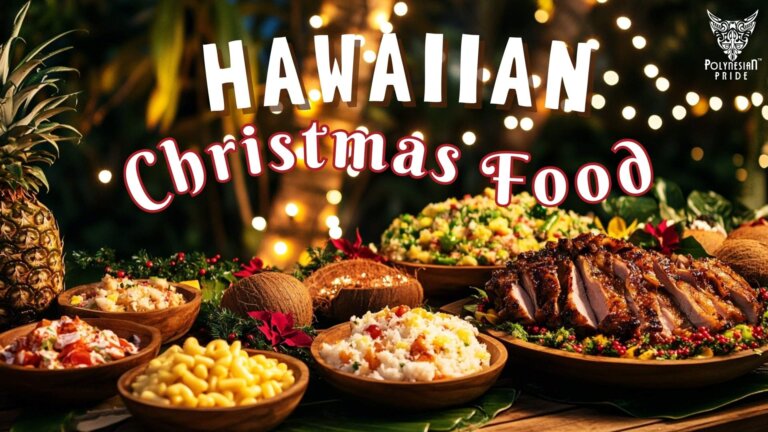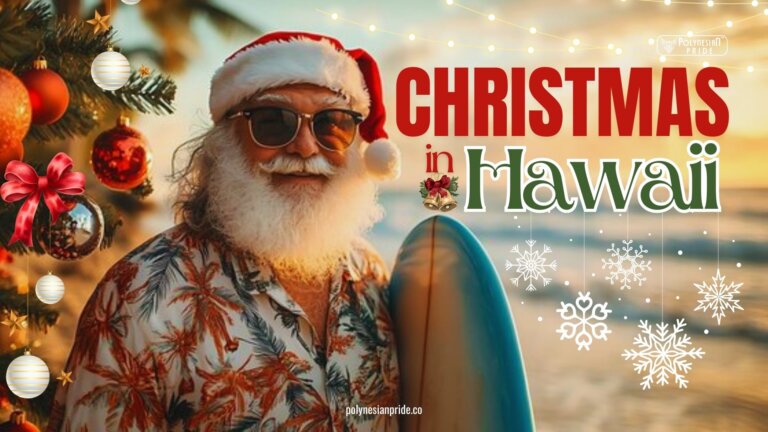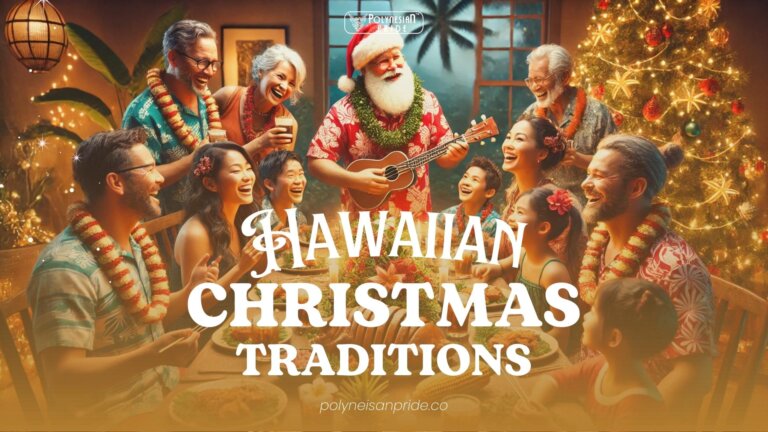Culture Of Samoa: Embracing The Rich Heritage of Samoa

Introduction
Nestled in the heart of the South Pacific, the culture of Samoa allures travelers to a rich tapestry of culture and traditions. From its vibrant landscapes to welcoming communities, Samoa culture offers a particular experience. To fully appreciate the beauty of this country, let’s delve deeper into understanding Samoa’s unique cultural heritage.
The Ancient Culture Of Samoa

What’s Samoan Culture: Exploring the Foundation
Around 3,500 years ago, the Lapita people embarked on a remarkable journey, discovering and settling the picturesque Samoan Islands. As they made this land their home, they nurtured a unique cultural identity, laying the foundation for the vibrant Samoan language and cultural heritage we cherish today.
Samoa Culture In Pre-Colonial Era
Before European contact in the 18th century, powerful chiefs (matai) structured Samoan society, exerting significant influence over their respective villages and territories. Traditional customs and practices, including intricate navigation techniques, skilled fishing, and sophisticated agriculture, played a pivotal role in their way of life.
Traditional Customs and Practices in the Culture of Samoa
- Navigation: Samoan navigators, known as the “tufuga va’a” were skilled in reading the stars, ocean currents, and other natural signs to navigate vast expanses of the Pacific Ocean.
- Fishing: Fishing was a crucial part of Samoan life, and various techniques were employed, such as traditional canoes (va’a), nets, and fishhooks.
- Agriculture: Samoans were skilled in cultivating crops like taro, breadfruit, and coconut, which formed the islands’ staple diet.

Western Samoa Culture And Traditions In Colonial Era
In the early 19th century, European explorers and missionaries arrived in Samoa, bringing new religions, technologies, and cultural influences. Colonial powers, such as Germany and the United States, exerted their influence over Samoa, leading to periods of political turmoil and resistance from the Samoan people.
The arrival of Christianity, introduced by missionaries like John Williams, led to the conversion of many Samoans and the incorporation of some Christian practices into their cultural traditions. While some traditional practices were challenged or adapted, the core values and beliefs of Samoa culture remained resilient.

Modern Culture In Samoa
You may have missed this information: Until July 1997, Samoan culture was still referred to as Western Samoa culture. Despite the challenges posed by colonization and globalization, this island country has endured and continues to thrive. Today, the Fa’a Samoa, or the “Samoan way,” remains a central aspect of life, guiding social interactions, family dynamics, and community values.
Values And Beliefs In The Culture Of Samoa
Family and Community In Samoan Culture
Samoan culture’s core lies in the concept of ‘aiga, or family. Within the ‘aiga, values like tautua (service), fa’aaloalo (respect), and alofa (love) are fundamental in shaping social interactions. ‘Aiga encompasses not only immediate family but extends to extended family and the wider community. Samoan culture and tradition strongly emphasize maintaining solid bonds within the ‘aiga and broader community, reflecting the essence of fa’a Samoa.

Religion and the Church in Samoa
Religion and the Church play a pivotal role in Samoan society. Introduced by missionaries in 1830, Christianity swiftly integrated with traditional Samoan beliefs. Christianity is widespread among Samoans, who typically attend church weekly and observe Sundays as a day of rest. Some family-run accommodations may offer something other than cooked breakfast on Sundays. Attire for church services typically includes modest clothing for both men and women. In certain villages, a mandatory evening prayer curfew known as “Sa” is observed, signaled by a bell or conch shell blowing, lasting around 10 to 20 minutes.

Nurturing the Culture of Samoa: Traditional Arts and Crafts
Samoa culture treasures traditional arts and crafts passed down through generations, showcasing creativity and preserving heritage.
Tapa Cloth Making
Bark cloth, known as tapa, softens bark through soaking and beating. Designs are painted onto the surface using natural dyes. Tapa is used in ceremonies for special occasions like birthdays and weddings, and in sacred contexts to wrap images of deities. It also plays a role in funeral rites. Across Polynesia, textiles like tapa are considered symbols of women’s wealth.

What Is A Samoa Tattoo?
The Peʻa, the malofie, is Samoa’s traditional male tatau (tattoo). These tattoos are a revered art form that connects modern Samoans to their ancestral traditions and way of life.
Samoans exclusively wear designs that symbolize community, power, status, respect, honor, and pride. Getting a peʻa is often considered a rite of passage for young men, marking their acceptance into the ‘aumaga (young men’s association) and ability to serve the matai (chiefs). For those without Samoan heritage, displaying these symbols is seen as disrespectful.

Culture of Samoa: Talofa Spirit in Music and Dance
The Evolution and Significance of Samoa Music
Historically, Samoans used two main instruments: the pate, a hollowed-out log drum, and the fala, a rolled-up mat beaten with sticks. Despite their simplicity, these instruments played a vital role in Samoan culture, with music preserving oral histories and providing rhythms for performance dances.
European contact introduced new instruments like the sielo, a stringed instrument made from a broomstick and box, and the ukulele, a small four-stringed guitar sometimes made from a coconut shell. These additions enriched Samoan music while maintaining its cultural significance.
Music has always been integral to Samoan culture, preserving and presenting much of its oral history. Traditional instruments include conch shells and nose flutes. At the same time, Samoans often accompany their singing with the pate (a hollowed-out log) and fala (a rolled-up mat), both beaten with sticks.

Exploring Samoan Culture Dance
In Western Samoa culture, Mak Sa’moa stands as a beloved rendition of the traditional Siva Samoa dance style, captivating audiences with its grace and cultural significance.
Alongside Mak Sa’moa, various other forms of conventional Samoan dancing thrive, offering unique charm and expression. The elegant taualuga dance, characterized by its fluid movements and storytelling gestures, holds a special place in Samoan culture, often performed by women during significant events and ceremonies.
Meanwhile, the dynamic siva afi, or fire dance, mesmerizes spectators with its daring displays of skill and bravery, symbolizing the resilience and spirit of the Samoan people. The rhythmic sasa dance, with its lively footwork and hand claps, embodies the joy and vitality of Samoan life, celebrated in gatherings and festivities.
Additionally, dances like the māuluulu, Laumei, and Tautasi contribute to the rich tapestry of Samoan cultural expression, each conveying its unique story and heritage through movement and rhythm. Experiencing those cultural dances is a must-thing to do in Samoa!

Cuisine of Samoa
The cuisine of Samoa vibrantly reflects the island’s rich natural resources, culinary traditions, and communal values. Samoan dishes are flavorful, nourishing, and deeply rooted in cultural practices, from fresh seafood to tropical fruits and root vegetables.
What is special about the cuisine of Samoa?
In Samoan cuisine, key ingredients like taro, coconut, and seafood feature prominently in various dishes, highlighting the diversity and abundance of local produce.
- Taro: a versatile root vegetable, serves as a dietary staple in Samoa and features in dishes such as palusami (taro leaves cooked in coconut cream) and fa’alifu kalo (boiled taro in coconut cream).
- Coconut: Known as the “tree of life,” the coconut is used in various forms in Samoan cooking, from coconut milk and cream to grated coconut in desserts and savory dishes.
- Seafood: With abundant access to the ocean, Samoan cuisine features an array of fresh seafood, including fish, shellfish, and octopus, prepared in traditional ways such as grilling, steaming, or coconut-based sauces.

Food’s role in the culture of Samoa
Food is central to Samoan social life, symbolizing hospitality, generosity, and community spirit during gatherings, ceremonies, and celebrations.
- Feasting Traditions: Samoan feasts, or “fiafia,” unite people to enjoy plentiful food, music, and dance, fostering bonds and strengthening relationships.
- Ceremonial Cuisine: Certain dishes, like ‘umu (earth oven-cooked meals), carry special meaning in Samoan ceremonies and rituals, featuring prominently at weddings, funerals, and other significant occasions.
Popular Food in Samoa
Among the many delicious dishes in Samoan cuisine, palusami and oka stand out as iconic favorites that showcase the flavors and culinary techniques unique to the islands.
- Palusami: A traditional dish made from taro leaves wrapped around coconut cream, onions, and sometimes meat or seafood, palusami is a creamy and savory delicacy enjoyed by many Samoans.
- Oka: Oka is a refreshing raw fish salad marinated in coconut cream, lime juice, onions, and chili peppers, creating a zesty and flavorful appetizer or main dish popular at gatherings and special occasions.

Celebrations and Festivals
Celebrations and festivals hold a special place in the culture of Samoa. They provide opportunities for communities to come together, honor traditions, and showcase their cultural heritage through music, dance, food, and various festivities.
Top Festivals to Experience in Samoa
- Teuila Festival: This renowned event celebrates Samoan heritage, arts, and traditions through a vibrant week-long program. From captivating cultural showcases to exhilarating beauty pageants, the Teuila Festival offers a comprehensive immersion into the essence of Samoan culture.
- Agricultural Shows: Throughout the year, Samoa hosts various farming shows highlighting the island’s rich agricultural heritage. Visitors can explore displays of local produce and traditional farming techniques and participate in rural competitions, offering insights into Samoa’s agricultural practices and innovations.
- Independence Day Celebrations: June 1st commemorates Samoa’s independence from New Zealand in 1962. Festivities include colorful parades, traditional performances, sports competitions, and cultural exhibitions, providing a glimpse into Samoa’s proud history and national identity.
- Fiafia Nights: Fiafia Nights are lively cultural performances at hotels and resorts across Samoa. They offer visitors a chance to experience traditional Samoan music, dance, and cuisine. These entertaining evenings showcase Samoan culture’s warmth and hospitality, providing travelers with unforgettable memories.
- Cultural and Arts Festivals: Throughout the year, Samoa hosts various artistic and arts festivals that celebrate the diversity of Samoan culture. From music and dance festivals to art exhibitions and storytelling events, these festivals offer unique opportunities to engage with local artists, artisans, and performers, enriching visitors’ understanding of Samoan creativity and expression.

Today, there are many ways to experience the culture of Samoa. You can visit Samoa Village in the Polynesian Cultural Center in Hawaii, where you’ll immerse yourself in traditional Samoan customs, arts, and performances. Alternatively, explore the Samoa Cultural Village on Beach Road in the heart of Apia. This vibrant village offers a hands-on experience with Samoan crafts, cooking, and rituals, providing a deeper understanding of the island’s rich heritage. Both locations offer unique insights into the culture and traditions that make Samoa a fascinating destination.
Modern Influences on Samoan Culture
In the face of proliferation worldwide, Samoa’s culture grapples with preserving its cultural identity amid modern influences.
Globalization’s Impact
- Changing Lifestyles: Globalization introduces new ideas and trends, affecting traditional practices in food, fashion, and social interactions within the culture of Samoa.
- Cultural Exchange: Exposure to diverse cultures leads to a fusion of influences in Samoan art, music, language, and cuisine.
Efforts to Preserve Culture
- Cultural Education: Programs educate young Samoans about their heritage through language, dance, and craft workshops, ensuring the preservation of the culture of Samoa.
- Artisanal Revival: Traditional arts and crafts like siapo making and wood carving are revived to preserve cultural practices in Samoa.
Balancing Modernity and Tradition
- Adapting Customs: Some traditions evolve to fit modern lifestyles, blending old and new practices within the culture of Samoa.
- Digital Connectivity: Digital platforms connect Samoans worldwide, facilitating discussions on identity and cultural preservation within Samoa’s culture.

Respecting the Culture of Samoa: Etiquette Tips For Visitors
Embracing local customs with sensitivity is crucial for a fulfilling experience in Samoa. Here are practical guidelines to navigate Samoan traditions:
Proper Greetings and Gestures
- Learn and use standard greetings like “talofa” and “fa’afetai.”
- Embrace the concept of alofa (love and compassion) in interactions.
- Show respect by addressing elders and authorities with appropriate honorifics.
Taboos and Customs Awareness
- Approach sacred sites, or tapu, with reverence and caution.
- Follow gift-giving customs by presenting gifts with both hands.
Engaging with Samoan Culture
- Demonstrate genuine interest by learning basic Samoan phrases.
- Adhere to modest dress codes, especially in villages and at ceremonies.
Dispelling Common Misconceptions
- Acknowledge the diversity within Samoan culture and avoid stereotypes.
- Understand the multifaceted aspects of Samoan society beyond surface portrayals.
Respecting Cultural Boundaries
- Treat traditional tattoo designs and cultural symbols with sensitivity and understanding.
- Avoid exploiting or commercializing Samoan cultural practices for personal gain.
Mindful Engagement
- Prioritize listening to and learning from Samoan voices, stories, and perspectives.
- Seek permission and guidance from local community members when participating in cultural activities or events.

Conclusion
In conclusion, Samoa’s culture is a rich tapestry of traditions, values, and practices reflecting resilience and creativity. From tapa cloth making to Siva dance, each aspect carries a legacy of storytelling and community. By understanding Samoa’s culture, we forge connections, celebrate diversity, and honor the wisdom of Fa’a Samoa. Talofa lava!
Frequently Asked Questions
What are some critical aspects of Samoan culture?
Strong family ties, communal values, respect for elders, and vibrant artistic traditions such as music, dance, and tattooing characterize Samoan culture. The Fa’a Samoa, or “Samoan way” guides social interactions, customs, and societal norms, emphasizing harmony, reciprocity, and cultural pride.
How can I learn more about traditional Samoan practices?
To deepen your understanding of traditional Samoan practices, consider engaging with local communities, attending cultural events and festivals, exploring museums and heritage sites, and seeking guidance from knowledgeable elders and practitioners. Immersing yourself in Samoa’s sights, sounds, and flavors can offer valuable insights into its rich cultural tapestry.
Can you get a Samoan tattoo if you’re not Samoan?
No, you don’t have to be Samoan to get a Samoan tattoo. Besides, It depends on how you approach Samoan art and culture. Simply copying someone else’s tattoo is disrespectful, as it involves stealing their personal story.
What are some typical traditional crafts in Samoa?
Traditional crafts in Samoa include weaving, wood carving, and siapo (bark cloth) making. Each reflects the Samoan people’s cultural values, aesthetics, and skills.

I am Leilani Miller – I research focusing on Vanuatu – volcanic landscapes, blue holes, coral reefs & rainforests. I have over five years of experience researching and sharing insights on tourism and environmental activism. Explore and experience without limits through my latest article.
Contact information:
Email: [email protected]
Tel: +1 (808) 555-1528






